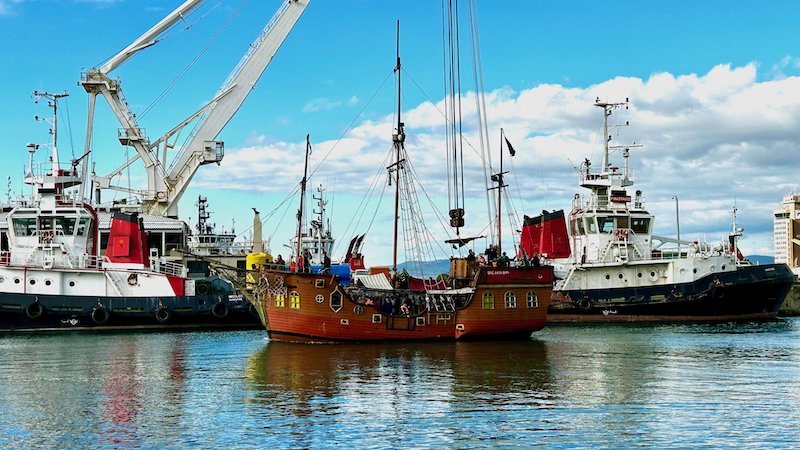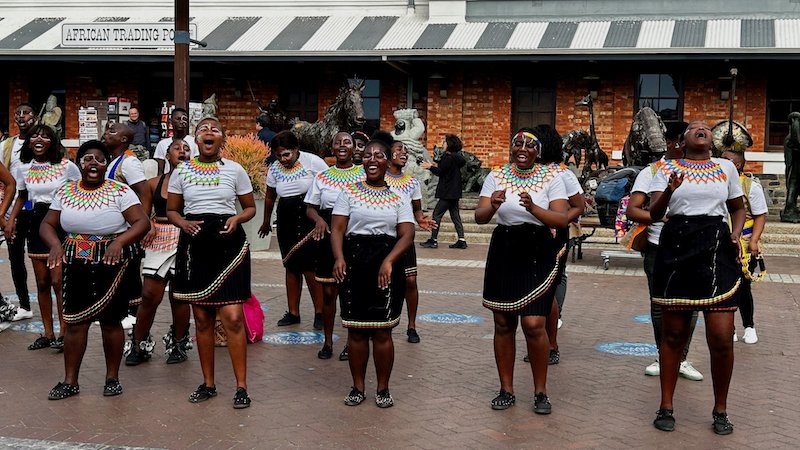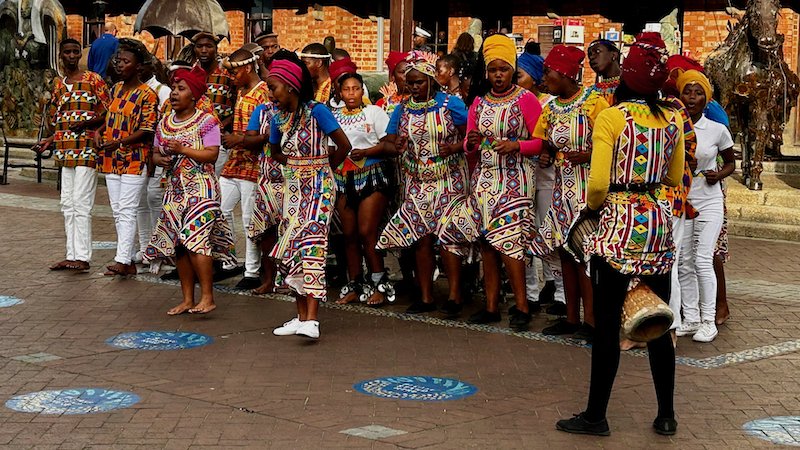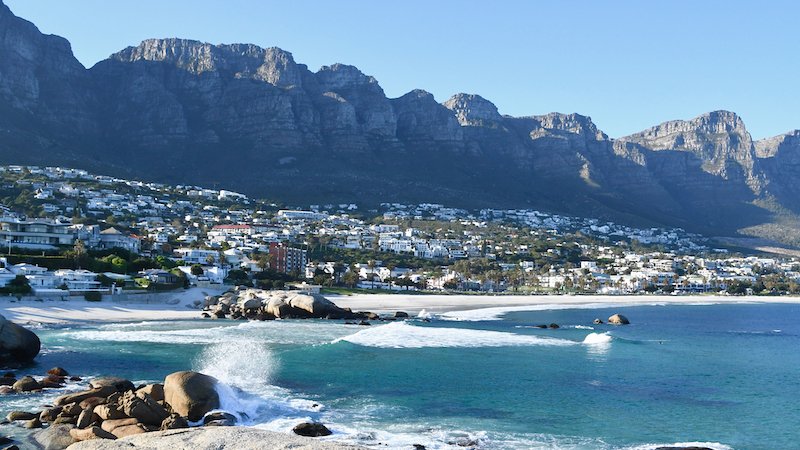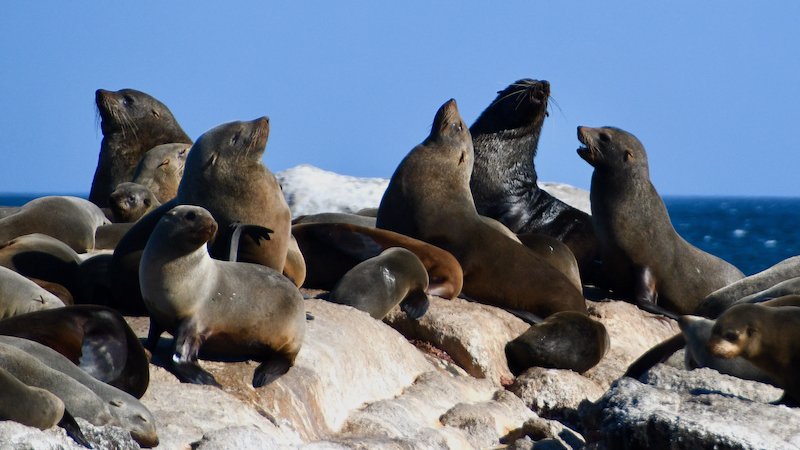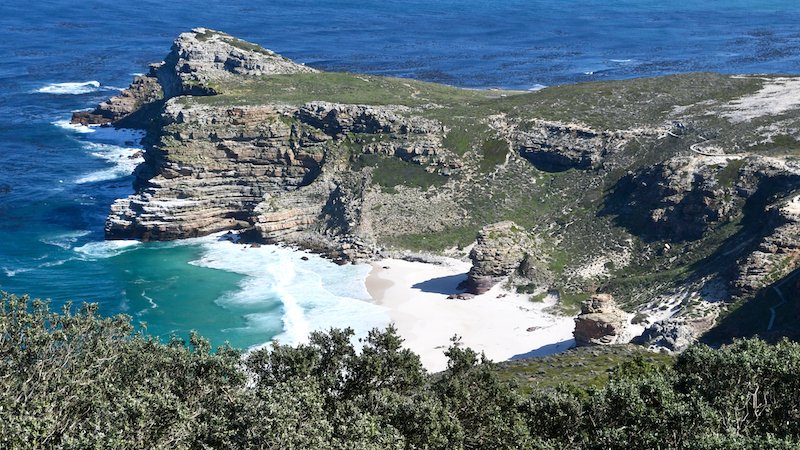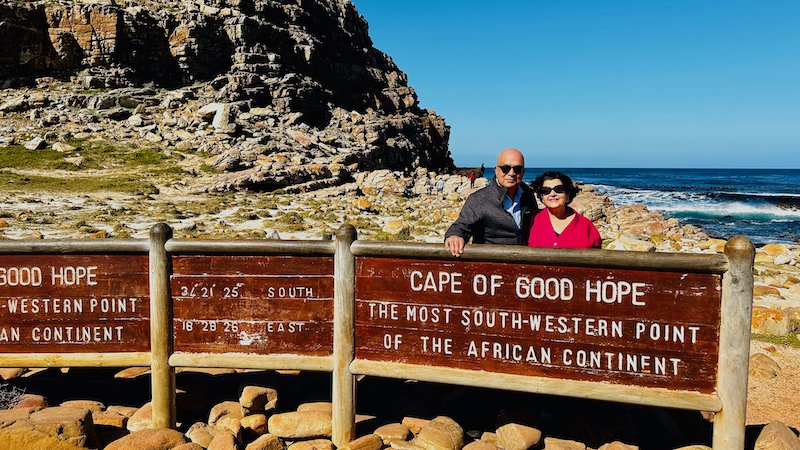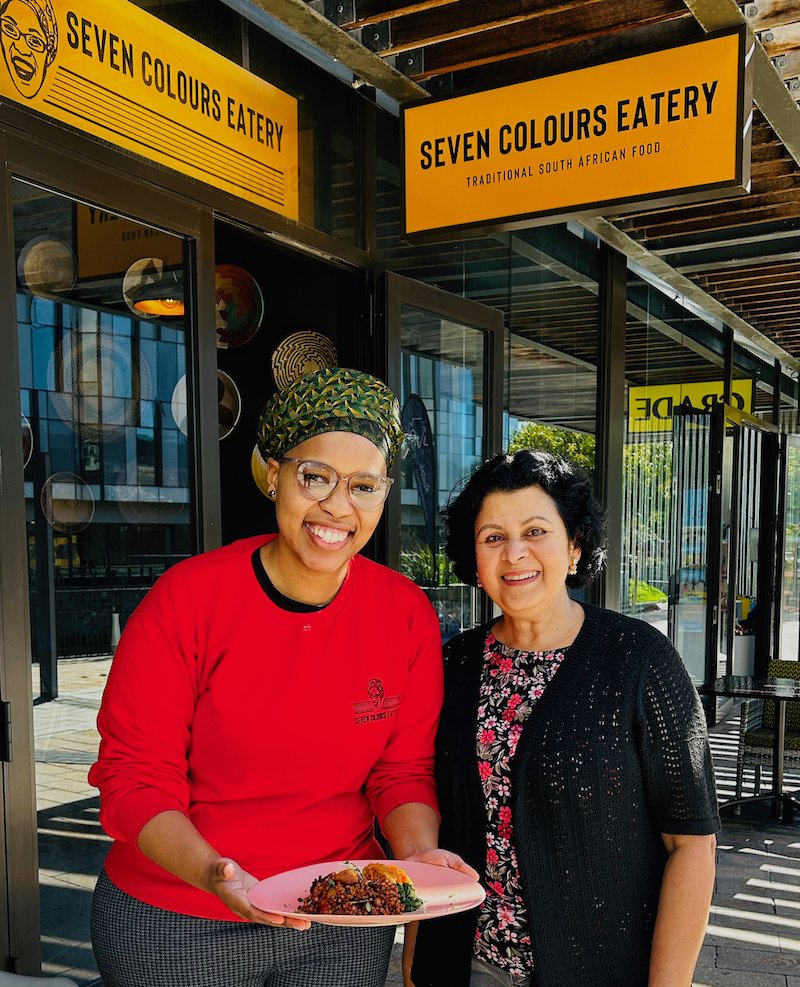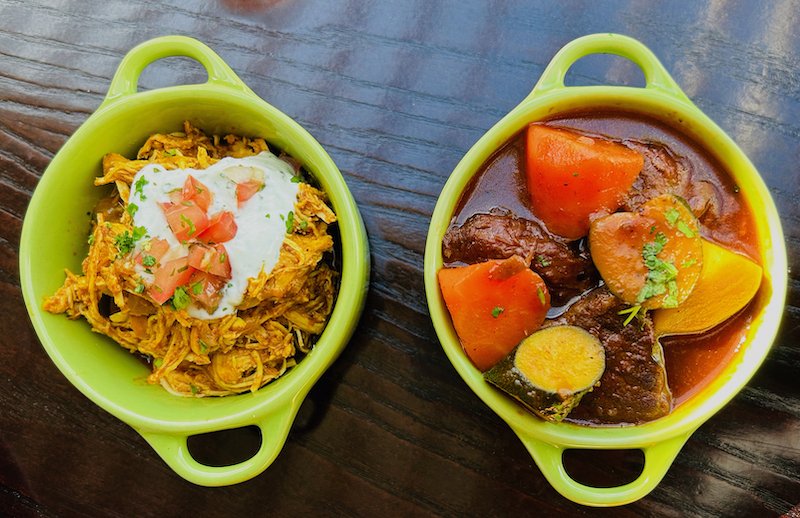Cape Malay Chicken Curry In Cape Town
Few places in the world can boast of a setting as impressive as that of Cape Town, which lies on a peninsula jutting into the blue waters of the south Atlantic, with mountains looming over the city. Strolling around its bustling waterfront, we did not need much imagination to understand how Table Mountain, which forms a dramatic backdrop, got its name.
Cape Town was founded when seventeenth century Dutch sailors established a settlement to serve as a stop for ships travelling from Holland to their colonies in Indonesia. Dutch settlers started to farm in the region and imported workers from Indonesia and Madagascar. Britain seized the Cape Colony in the nineteenth century and migrants from other parts of Europe and Asia were added to the city’s rising population. Today Cape Town is a proudly African city, with a gloriously multicultural population.
Table Mountain is one of the most visited tourist sites in Cape Town. The bravest, and fittest, visitors hike up one of several steep trails that lead to the top. We preferred to take a cable car that whisked us up in a few minutes while giving us spectacular views of Cape Town and the surrounding area.
Standing on the plateau on the top of the mountain, we saw to our left the pointed peak known as Lion’s Head – and yes, it does look like that when viewed from the right angle – which descends into the low range of Signal Hill. The city surrounds these hills and sprawls over their lower slopes. Farther away, in the middle of the bay, we could see Robben Island, site of the notorious prison where Nelson Mandela and other political prisoners were held for decades.
The Victoria & Alfred Waterfront is another popular destination in Cape Town, named after Queen Victoria and her son, Alfred, who visited the port in 1860 as a young officer on board a naval vessel and symbolically laid the first stones to build a proper harbour. Today the V&A Waterfront is still a working harbour, with massive cranes visible against the skyline, but is also filled with shops, restaurants and art studios that attract millions of visitors every year.
This being South Africa, there is music and dance everywhere. At the V&A waterfront, troupes of dancers and singers filled the air around us with joyous tunes. The beat of drums and exhilaration of the performers was infectious, and lots of visitors jumped up to join in the fun!
The original clock-tower that marked the old Port Captain’s office has been carefully restored, though it is now occupied by a restaurant rather than port officials. From here you can catch a ferry for Robben Island, where the prison has been converted to a museum dedicated to those who were held captive there.
When Nelson Mandela was released from Robben Island in 1990 he gave his first public speech to a crowd gathered in front of Cape Town City Hall. A life-size statue has been placed, in the same balcony where he stood, to mark that occasion.
Cape Town is surrounded by spectacular scenery and little suburban towns are now big tourist attractions. Just a few miles from the city centre we visited the beachfront resort of Hout Bay, behind which looms a range of mountains known as the “Twelve Apostles”. We took a short boat ride to little islands in the Atlantic filled with seals sunning themselves.
A little further down the coast is the Cape of Good Hope, named by Portuguese mariners sailing around Africa towards Asia. The name expressed the optimism they felt on having reached what they though was the turning point from which they could turn and make their way up the east coast of Africa. For many though, the steep cliffs and turbulent waters off the Cape brought only disaster as many ships foundered and sank in these seas.
The Cape region is the home of the African penguin, a flightless bird that people find both adorable and irresistible. A good place to see them is Boulder’s Beach, where boardwalks have been built near a large penguin colony. We could walk to within a few feet of the penguins, who appear quite unperturbed by the crowds of tourists and stood as if they are deliberately posing for pictures.
Cape Town’s multicultural population has created an equally eclectic cuisine. “Cape Malay” originally referred to people who trace their roots to Indonesia, but now encompasses most Muslims, though many of them hailed from Madagascar, India, or other parts of Asia. Many of them settled in the area known as Bo-Kaap in Cape Town, a picturesque neighbourhood of narrow cobbled streets lined with bright, neon painted houses and home to some of the most exciting Cape Malay restaurants.
Cape Malay cuisine, steeped in history, preserved through centuries and handed down generations is a proud and cherished part of Cape Town’s culture. It employs the spices and cooking techniques of regions such as Malaysia, Indonesia and India, while combining them with local ingredients to create a unique and distinctive cuisine.
One of the best places to try Cape Malay food in Cape Town is Bo-Kaap Kombuis, a family run restaurant specializing in delicious, traditional Cape Malay cuisine. We tried all of their tasting platters which came with a variety of their most popular curries, no two of them alike. For two Indians missing their spices, this was like a taste of home!
We happened upon Seven Colours Eatery quite by a lucky chance as it was very close to our hotel. Chef Nolu Dube-Cele creates culinary magic from local ingredients, following traditional recipes that are bursting with flavour and colour!
This was our chance to try typical South African food and while it was all new to us, it was incredibly delicious! There was a delicious tomato laced sorghum with roasted vegetables; Chakalaka, a home made condiment with onions, tomatoes and spices; and Pap or white corn cooked till soft and fluffy.
Chef Nolu herself stepped out of the kitchen to welcome us and walk us through the different dishes on the menu, helping us choose a nice selection. One of my favourites (and it was really hard to pick just one!), was pulled Cape Malay Chicken that was tender, flavourful and napped by a thick rich curry sauce.
This tasty, mildly spiced chicken curry is typical of Cape Malay cuisine, and was one of our favourites during our visit to Cape Town. It is usually served with yellow or white rice to soak up the delicious sauce, along with a variety of chopped salads and chutneys on the side. Try pairing it with Chana Masala for a hearty meal.
If you want to change up the recipe a bit, reduce the amount of tomatoes by 1 cup and add a cup of coconut milk or plain yogurt instead, it will add a lovely creaminess to the curry.
Cape Malay Chicken Curry
2 tbsp oil
1/2 tsp cumin seeds
4 each, whole spices: cardamom pods, cloves
1/2 inch stick of cinnamon
2 mdm onions, finely chopped
2cloves garlic, finely chopped
1 inch piece ginger, grated or minced
1 tsp each, ground spices: turmeric, coriander, cumin
1/2 tsp each, ground spices: cayenne pepper (chilli powder), black pepper, fennel, paprika
Salt to taste
2 cups diced tomatoes, canned or fresh
2 lb skinned chicken drumsticks (about 10)
1/2 cup water
2 tbsp chopped fresh coriander leaves
Yogurt for optional garnish
Warm oil in deep skillet over mdm heat. Add cumin seeds, cardamom pods, cloves and cinnamon stick. Fry for 30 sec.
Add onions, garlic and ginger to skillet. Sauté until lightly browned and softened, about 8 -10 min.
Add all the ground spices and salt, sauté 30 sec.
Reduce heat to low, add tomatoes. Sauté until softened and blended into the sauce, 5-7 min.
Add chicken drumsticks, turn to coat with sauce. Mix in water, cover and cook on low heat for 40 - 45 min, stirring occasionally, until chicken is tender and sauce has thickened. If desired, turn up heat and boil off excess sauce for a thicker curry.
Fold in the chopped fresh coriander and serve with a dollop of yogurt if desired.
Serves Four



